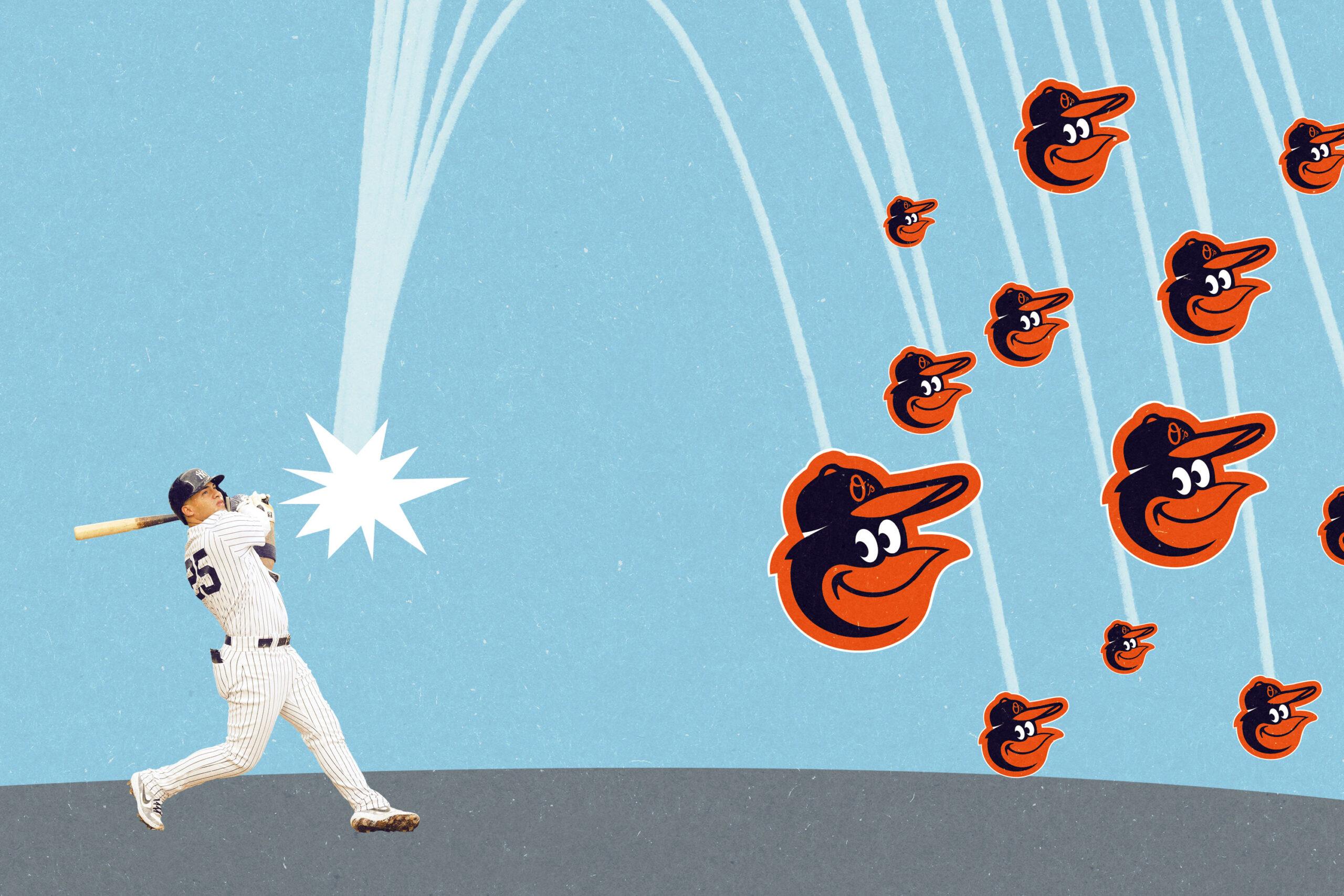
The Orioles enacted an unusual tactic on Monday night. With runners on first and second and two outs in the eighth inning, Baltimore manager Brandon Hyde chose to issue an intentional walk to load the bases with two outs. But for good reason: Gleyber Torres was up next, and he had already hammered Orioles pitching for three home runs over the course of the day’s doubleheader.
“I just kind of had enough,” Hyde said after the game. “We’re making him look like a first-ballot Hall of Famer.”
The day’s events aside, the decision was still an unusual one: The only other players to be intentionally walked with runners on first and second this season are Mike Trout and Christian Yelich, who rank first and second, respectively, as the best hitters in baseball. Only, the best hitter in 2019 isn’t Trout or Yelich; it’s Torres whenever he faces the Orioles, who indeed make the young Yankees infielder look like a consensus choice for Cooperstown.
Including those three Monday homers, Torres tallied 13 dingers against the Orioles this season, as the Yankees battered Baltimore pitching: 61 home runs, 7.9 runs per game, and a 17-2 record with wins in the final 16 meetings. But Torres was the main star; as many of his touted teammates succumbed to injuries, he slugged his way into the record books.
Torres wasn’t history’s best hitter against a single opponent in a season. By OPS (minimum 70 plate appearances), that would be Barry Bonds versus the 2004 Dodgers, against whom the Giants outfielder hit .436/.718/1.128. (L.A. issued 19 intentional walks to Bonds in just 19 games.) Torres’s OPS ranks 26th on the list, and it isn’t even the best recent mark from a Yankee against an Oriole: Aaron Judge did better against Baltimore in 2017, crushing Orioles pitching en route to a .426/.588/1.049 split.
But neither Bonds nor Judge, nor anyone else in the divisional era, matched Torres’s home run total against a single opponent. Every other player to hit 13 homers against an opponent in MLB history—Jimmie Foxx against the 1932 Tigers, Hank Sauer against the 1954 Pirates, Joe Adcock against the 1956 Dodgers, Roger Maris against the 1961 White Sox—did so before the divisional era, as did Lou Gehrig, the record-holder, who smashed 14 homers against the 1936 Indians but benefitted from 23 starts against Cleveland that year.
That this player set the home run mark against this team in this year is suitably representative of a number of intersecting trends in the sport. Torres, just 22 years old and a middle infielder who hit 12 of his 13 homers against Baltimore while playing shortstop, is succeeding in an era defined by elite performance from young players, and unprecedented power from shortstops. He’s succeeding in a season with a juiced ball, that sets the stage for waves of home runs and ensuing records. And he’s succeeding against a pitching staff that looks like one of the worst in league history, on pace to break the home runs allowed record by nearly 100 dingers.
That said, the funny part about Torres as the record-setting player is that while he notched 13 homers against Orioles pitching this season, he’s recorded just 13 more homers against the rest of his opponents combined. Against non-Orioles opponents, Torres is hitting .261/.326/.420. For reference, the MLB average this season for nonpitchers is .257/.328/.444, so while Torres has rocked Baltimore pitching, he’s actually been slightly below average against everyone else.
So let’s imagine a world in which he doesn’t have to play everyone else—just a full schedule against Baltimore pitching—and extrapolate some full-season statistics. Why? Because Torres’s home run total is an especially fun fact, and it’s August, and nothing else about the historically spread out AL East stands out at the moment.
Torres ended up playing 18 games against Baltimore, so multiplying his counting stats by nine gives him 162 games’ worth of numbers. And what numbers they are:
- .394/.467/1.045 slash line, good for a 1.512 OPS
- 81 singles
- 81 walks
- 36 doubles
- And, oh yeah, ONE HUNDRED SEVENTEEN home runs
How many home runs is 117? The two largest home run totals this decade add up to 113. In Bonds’s record-setting 2001 season, he would have needed to play an extra 92 games to reach 117 home runs. José Altuve has 119 home runs in his career.
Of course, such a lofty total would give Torres the best batting performance in league history by a wide margin, even after adjusting for park and league context.
Top 10 Seasons by wRC+
And even accounting for his slightly below-average defense and baserunning numbers doesn’t prevent Torres’s hypothetical WAR from climbing to the top of the historical charts.
Top 10 Seasons by WAR
Since integration, Bonds is the only player to reach 12 WAR in a season, and Torres vs. Baltimore would require Bonds’s best year plus 4.6 more—alone an All-Star-caliber total—to match Torres. Or, using last year’s WAR, Torres vs. Baltimore would be the near-equivalent of Trout plus Yelich, or Manny Machado plus J.D. Martinez plus Javier Báez. And sure enough, last year, Machado, Martinez, and Báez combined for 114 homers, just short of hypothetical Torres’s 117 against Baltimore.
To be fair, Torres was relatively fortunate to finish with even 13 home runs against Baltimore this season. His actual slugging percentage versus the Orioles ended up at 1.045, but through Tuesday’s game, his expected slugging percentage versus the Orioles—based on his batted balls’ exit velocity and launch angle—was just .801, which is still extraordinary but also isn’t worthy of further examination. The difference between Torres’s actual and expected slugging percentages was the largest for any Baltimore opponent with at least 20 plate appearances. For comparison, teammate Gary Sánchez’s expected slugging mark through Tuesday was 1.003—close to Torres’s actual mark—but he was relatively unlucky and thus fell short of expectation, mashing “only” 10 homers against the Orioles.
For Torres, this home run from May—one of three he hit in a doubleheader that day—had only a 15 percent chance of becoming a hit of any kind, per Statcast.
And this homer from five days later had just a 20 percent chance of becoming a hit.
But they were, of course, as were 11 other long balls launched from Torres’s bat. Anyone who sets a record requires some measure of luck, and it’s not as if Torres didn’t earn most of his trots around the bases, which were soundtracked by an increasingly exasperated Gary Thorne in the Orioles’ broadcast booth. Now he just needs to figure out how to translate his performance to the rest of the league, too, because only in a fantasy world does he actually get to face 162 games of Orioles soft toss.

